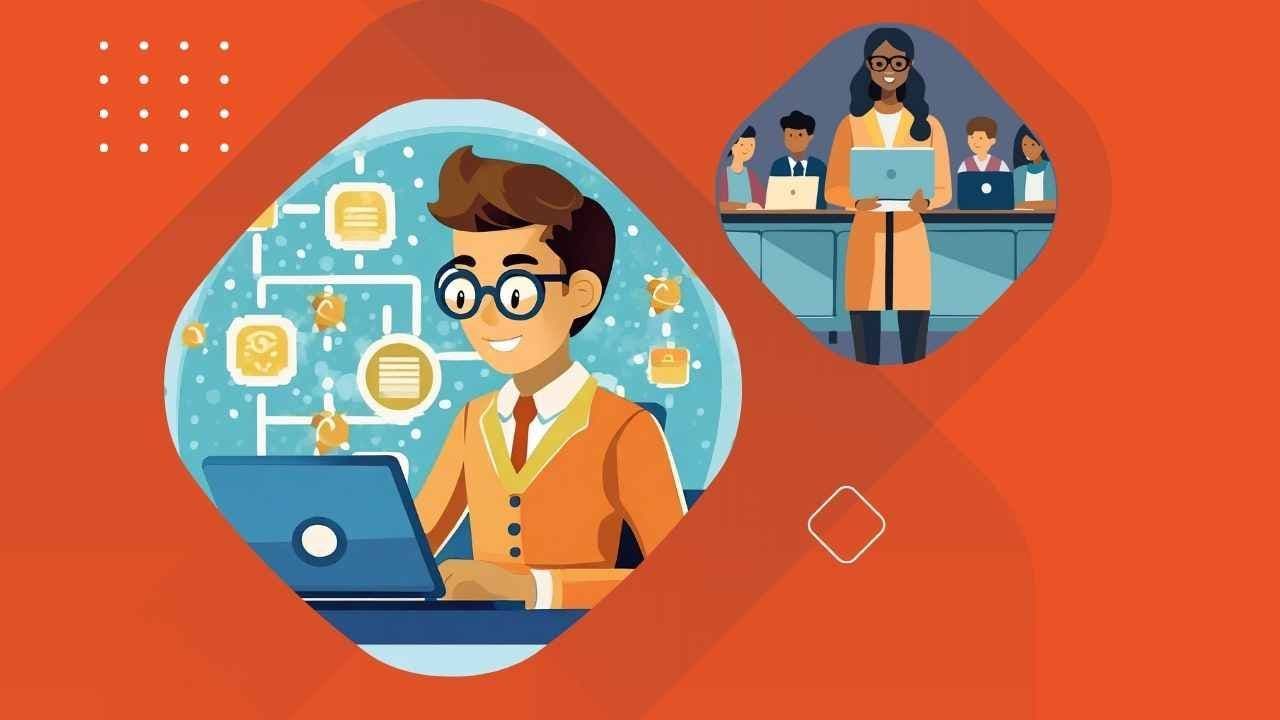As a Teaching and Learning consultant, my journey into understanding AI's role in education has been enlightening. And, while I am no expert, I have dedicated a lot of effort into preparing and delivering insightful content to teachers actively engaged in using, managing, and sometimes competing with AI in their classrooms.
Artificial intelligence (AI) initially may seem intimidating. Yet, in an environment where students are already adapting to this new technology, it's important to recognize its vast potential to enhance both teaching and learning. With this in mind, here are some key insights I’ve found, based on my own research and surveys, that highlight how AI can be a transformative force in education.


An Example of AI in the Classroom
Teachers love a powerful resource, and AI has the ability to provide endless creative solutions, materials and ideas for not only lessons, but also projects, assessments, and simple questions. While I would never recommend a copy and paste scenario, AI can act as an assistant, helping teachers spark creativity, fuel ideas, and evolve existing plans into something new and fresh for students.
Take Khanmigo from Khan Academy, for example. Khanmigo's AI-driven platform showcases a variety of tools that adapt to the needs of both students and teachers in the classroom, such as:
- Personalized Tutoring: Provides individualized learning paths to students, fostering understanding and confidence.
- Educator Support: Assists teachers with AI-guided lesson planning and student feedback, optimizing their time for more focused teaching.
- Creative Enhancement: Offers prompts and suggestions in creative writing, encouraging students to explore and express their ideas.
- Computer Science Learning: Enhances coding education with interactive experiences and real-time feedback, making it more accessible and engaging for students.
Teacher vs. Student Approach to AI
My research revealed that nearly 45% of teachers are uncomfortable with using AI in the classroom, compared to 9% that felt confident integrating it into classroom instruction. As a teacher, this was not a shock. The battle with teaching students to responsibly use technology has been a constant struggle for years now. I took it upon myself to convince not only the teacher in me, but others as well, to see AI as a resource and a powerful tool in education.
With that in mind, all use of AI in the classroom should take into consideration two key steps: First, addressing any misuse and understanding potential inaccuracies; and secondly, responsibly implementing AI while fully considering its substantial benefits for both students and teachers.


Using AI Responsibly
In my middle school classroom, I found that when students were overly restricted, many had a stronger desire to explore, so why not embrace what is there instead of fighting it? The best path to nurturing a tech-enriched classroom is to set clear plans and expectations. This does not necessarily mean having an ironclad, unchanging plan with a hard-core consequence system that severely restricts students. However, a classroom with a reasonable usage policy gives students the necessary guidelines to comfortably use what is already available to them.
A great use of AI is to allow it to help create this usage policy.
TRY IT OUT
Ask AI to help you create an AI Usage Policy for your grade level and subject area. Don't be afraid to revise the result by inputting more specific prompt information until you are satisfied with the output. Capitalize on the results by revising them to fit your classroom needs. Of course, your district and school policy should be considered when developing this policy. Once a proper policy is in place, then release the students into the powerful world of AI in education and relish in what is possible.
A few more ideas for students using AI:
- Create their own study guides from notes
- Have a personalized tutor
- Get subject specific practice (think math!)
- Conduct research
- Create a self-assessment
- Generate brainstorms and ideas
- Spark creativity
- Provide feedback based on teacher-set criteria
While bringing AI to your classroom might feel like opening a door and letting a big scary monster in it can be a total game changer! Students and teachers alike can benefit from AI’s ability to improve efficiency and spark creativity.


This veteran middle school teacher challenges you to explore and embrace the power that artificial intelligence holds to create a more productive, engaging classroom environment that will, no doubt, elevate learning to new heights!
Connect with one of Trafera's Teaching and Learning consultants for more resources and info on using AI in the classroom!


